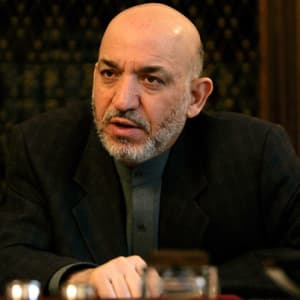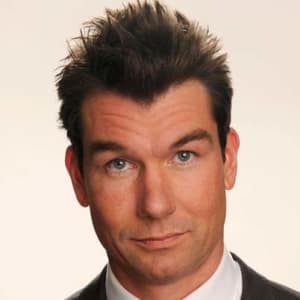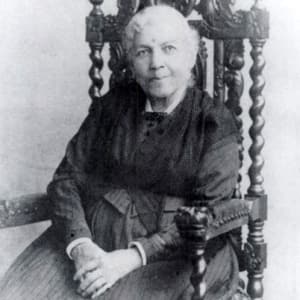
Hamid Karzai
Hamid Karzai worked to overthrow the Taliban before becoming president of Afghanistan in 2004. As president he faced enormous political and economic challenges.
Synopsis
Born in Afghanistan in 1957, Hamid Karzai emerged as a resistance leader under Taliban rule and worked to undermine the regime. Karzai became president in 2004 after American-led forces had overthrown the Taliban, but the enormous challenges faced by Afghanistan (including government corruption, Taliban insurgents, and severe poverty) made his work difficult.
Early Life
Political leader, President of the Islamic Republic of Afghanistan. Born December 24, 1957 in Karz, Afghanistan to a distinguished family. Educated in Afghanistan and India and rose through the political ranks during the turbulent Soviet occupation to become president of the country after the fall of the Taliban. After a fraud-ridden election in 2009, he was reelected when his opponent withdrew from the run-off election.
Hamid Karzai was born in the small village of Karz, located on the edge of Kandahar City in southwest Afghanistan. He is an ethnic Pashtun of the Popalzai tribe and has six brothers and one sister. His grandfather, Khair Mohammad Khan, served in the 1919 war for independence and was deputy speaker of the Afghanistan Senate. Karzai's father, Abdul Ahad Karzai, was a popular tribal elder and political figure who served as deputy speaker of the Afghan Parliament.
Hamid Karzai was educated in Kabul, graduating from high school in 1976. He then traveled to India as an exchange student and attended Himachal Pradesh University. He is well versed in several languages, including his native Peshto, Persian, Hindi, French and English. In 1980, when the Soviet Union invaded Afghanistan, Karzai traveled to Pakistan to work as a fund-raiser supporting the anti-Soviet Mujahedeen fighters' insurgency. During this time, the Mujahedeen were secretly supplied by the United States and Hamid Karzai was a contractor for the CIA.
Entry Into Politics
After the Soviets pulled out of Afghanistan in 1989, Hamid Karzai served as deputy foreign minister in the Mujahedeen transitional government. When civil war broke out between various Mujahedeen groups in 1994, Karzai resigned and helped organize a grand council to resolve differences between the rival groups. One of the political groups Karzai initially supported was the Taliban, seen by many to be a welcome alternative to the corruption, brutality, and incessant fighting of the Mujahedeen warlords. The Taliban offered Karzai the post of UN ambassador, but he declined to serve after discovering the group had fallen under the influence of foreign terrorists.
Hamid Karzai moved to Quette, Pakistan, and worked to undermine Taliban control and reinstate the former Afghan king Zahir Shah. In 1999, Karzai married Zeenat Quraishi, a doctor who was providing medical attention to Afghan refugees living in Pakistan. She too was raised in the city of Kandahar, is Pashtun and a member of the Quraish tribe. She rarely ventures beyond the security zone of the presidential palace. In 2007, the couple gave birth to a son, Mirwais Karzai.
On the morning of July 14, 1999, Karzai's father was gunned down while returning from a mosque in Quetta. It was presumed that Taliban forces carried out the assassination. Hamid Karzai was selected to succeed his father as Khan of the half-million Popalzais. Defying both Pakistan and Taliban authorities, Karzai led a convoy of tribal mourners carrying his father's body home for burial in Kandahar, even though it was under Taliban control. This act made him one of the most visible leaders of Pashtun resistance against the Taliban.
9/11 and US Invasion
By early 2001, Hamid Karzai was working closely with Ahmad Shah Massoud, the military commander of the Northern Alliance, a group composed of former Afghan tribal rivals organized to fight the Taliban. Several times that year, Massoud and Karzai warned the United States that the Taliban were connected with al Qaeda and that there was a plot for an imminent attack on the United States, but their warnings went unheeded. On September 9, 2001, two days before the 9/11 attacks in America, Massoud was assassinated by al Qaeda agents in a suicide bombing.
After the U.S. invasion of Afghanistan in October 2001, Mujahedeen forces loyal to the Northern Alliance worked with the U.S. military and CIA operatives to overthrow the Taliban government. Hamid Karzai left Quetta, Pakistan and slipped into Afghanistan, but was mistakenly injured by a U.S. "friendly fire" missile attack. On November 4, American forces flew him out of Afghanistan for medical attention to the wounds he sustained to his face and body.
After the fall of the Taliban, Hamid Karzai's political status began to rise. In December 2001, four factions representing the major Afghan ethnic groups met with U.S. political leaders in Bonn, Germany to establish the Bonn Agreement. The ethnic groups decided to set aside old and bitter rivalries and form an interim government. Karzai was selected to serve a six-month term as Chair of the Transitional Administration. During the 2002 Loya Jirga (a traditional Pashtun political meeting held to select a leader) a new constitution was approved creating a presidential government and Karzai was selected to serve as interim president during the two-year transition. Then after the 2004 election, Hamid Karzai became president of the Islamic Republic of Afghanistan winning 21 of the 24 provinces or 55 percent of the vote. Many saw this event as a new start for the troubled country.
Afghanistan President
Hamid Karzai faced many challenges in his first term as president. Afghanistan is a historically poor country that has seen very little advancement in the past century. Landlocked, it has experienced hostile relations with its surrounding neighbors. Much of the population engages in subsistence farming and adheres to ancient tribal traditions. Soon after his election, it became apparent that Karzai had limited control of his country. Often called the "mayor of Kabul,"Karzai has little political influence beyond the capital city's boundaries. Historically, the rural areas have been controlled by local leaders and tribal warlords. To his credit and with varying degrees of success, Karzai has been able to negotiate alliances with some of them and purge many former warlords from the administration's cabinet. Since the 2004 election, the Afghan economy has grown rapidly. Government revenue has increased every year, though the nation is still heavily dependent on foreign aid.
After the U.S. government diverted its military resources from Afghanistan to Iraq in 2003, a resurgent Taliban emerged. Karzai pleaded with U.S. officials to increase resources and not endanger the civilian population in their pursuit of Taliban fighters. But reaction has been slow or incomplete with most Americans and much of the world engrossed in other matters. In what seemed an act of desperation, Karzai offered official pardons to all militants who would lay down their weapons and join in the nation's rebuilding. He has made clear his distinction between Taliban members who are welcome in the process and foreign fighters who are not. Karzai has been criticized for the slow progress of his nation. The Afghan government is said to be so riddled with corruption that for many Afghan people, the Taliban offer a better alternative.
Controversies
On August 20, 2009, the second Afghan presidential election was held. Flawed by a lack of security, low voter turnout, and alleged widespread ballot stuffing, Hamid Karzai received just a little over 50 percent of the vote. A UN commission monitoring the election determined that many of the votes for Karzai were fraudulent, reducing his numbers and forcing a run-off election with his chief rival, Foreign Minister Abdulla Abdulla. The run-off election was scheduled for November 7, 2009, but in a not-so-surprising move Abdulla Abdulla announced his withdrawal from the run-off election citing continued corruption and fraud in the voting process. Subsequently, Karzai was declared the winner.
On December 1, 2009, U.S. President Barack Obama announced a military surge of 30,000 additional U.S. troops be sent to Afghanistan to constrict the influence of the Taliban insurgency and debilitate al Qaeda's influence in the region. In his announcement, the president put pressure on Hamid Karzai to clean up the corruption in his government and help build a more affective Afghan army and police force that can play a greater role in protecting and building their nation.




